AMAZON multi-meters discounts AMAZON oscilloscope discounts
...
Introduction
During the elapsed six and a half decades since the invention of the transistor, the power electronics world has been able to enjoy the benefit of many different types of power semiconductor devices. These devices are able to handle voltages from a few volts to several kilovolts and switching currents from a few milliamperes to kiloamperes. Within a decade from the invention of the transistor, the thyristor was commercialized.
Around 1968 power transistors began replacing the thyristors in switch-mode power systems. The power MOSFET, as a practical commercial device, has been available since 1976. When "smart power" devices appeared in the market, designers were able to make use of the insulated gate bipolar transistor (IGBT) from the early 1990s.
In 1992 MOS-controlled thyristors were commercially introduced, and around 1995 semiconductor materials such as GaAs and silicon carbide (SiC) opened new vistas for better-performing power diodes for high-frequency switching systems. Presently, the spectrum of what are referred to as "power devices" spans a very wide range of devices and technology. Discrete power semiconductors continued to be the leading edge for power electronics in the 1990s. Improvements on the fabrication processes for basic components such as diodes, thyristors, and bipolar power transistors have paved the way to high-voltage, high-current, and high-speed devices. Some major players in the industry have invested in manufacturing capabilities to transfer the best and newest power semiconductor technologies from research areas to production.
Commercially available power semiconductor devices could be categorized into several basic groups, such as diodes, thyristors, bipolar junction power transistors (BJTs), power metal oxide semiconductor field effect transistors (power MOSFETs), insulated gate bipolar transistors (IGBTs), MOS-controlled thyristors (MCTs), gate turn-off thyristors (GTOs), and insulated gate commutated thyristors (IGCTs). This section provides an overview of the characteristics, performance factors, and limitations of several of these device families.
Power Diodes and Thyristors
Power Diodes
The diode is the simplest semiconductor device, comprising a P-N junction. In attempts to improve its static and dynamic properties, numerous diode types have evolved. In power applications, diodes are used principally to rectify, that is, to convert alternating current to direct current. However, a diode is used also to allow current freewheeling.
That is, if the supply to an inductive load is interrupted, a diode across the load provides a path for the inductive current and prevents high-voltage L di/dt from damaging sensitive components of the circuit.
The basic parameters characterizing the diodes are the maximum forward average current
IF(Ave) and the peak inverse voltage (PIV). This parameter is sometimes termed blocking voltage (Vrrm). There are two main categories of diodes, namely general-purpose P-N junction rectifiers and fast-recovery P-N junction rectifiers. General-purpose types are used in circuits operating at line frequencies such as 50 or 60 Hz. Fast-recovery (or fast-turn-off) types are used in conjunction with other power electronics systems with fast-switching circuits.
Classic examples of the second type are switch-mode power supplies (SMPSs), inverters, etc. FIG. 1(a) indicates the capabilities of a power device manufacturer catering to very high power systems, and FIG. 1(b) indicates the capabilities of a manufacturer catering to a wide range of applications.
In high-frequency situations such as inverters and SMPSs, two other important phenomena dominate the selection of rectifiers. Those are the "forward recovery" and the "reverse recovery."
Forward Recovery:
The turn-on transient can be explained with FIG. 2. When the load time constant L/R is compared to the time for turn-on tfr (forward recovery time), load current will hardly change during this period. For the time t < 0, the switch Sw is closed. Steady conditions prevail and the diode D is reverse biased at -VS. It’s in the off state, and iD = 0.
At t = 0, the switch Sw is opened. The diode becomes forward biased, providing a path for the load current in R and L, so that the diode current iD rises to IF (≈ Il) after a short time tr (rise time) and the diode voltage drop falls to its steady value after a further time, tf (fall time). This is shown in FIG. 2(b). The diode turn-on time is the time tfr, which comprises tr + tf. It takes this time tfr for charge to change from one equilibrium state (off) to the other (on).
The total drop VD reaches a peak forward value VFR that may be from 5 to 20 V, a value much greater than the steady value VDF generally between 0.6 and around 1.2 V. The time tr for the voltage to reach VFR is usually about 0.1 μs. At a time t > tr, the current iD becomes constant at Il (which will be the forward diode current IF).
Further, conductivity modulation takes place due to the growth of excess carriers in the semiconductor accompanied by a reduction of resistance. Consequently, the iDRD voltage drop reduces. In the equilibrium state, which may take a time of tf, with a uniform distribution of excess carriers, the voltage drop vD reaches its minimum steady-state value VDF.
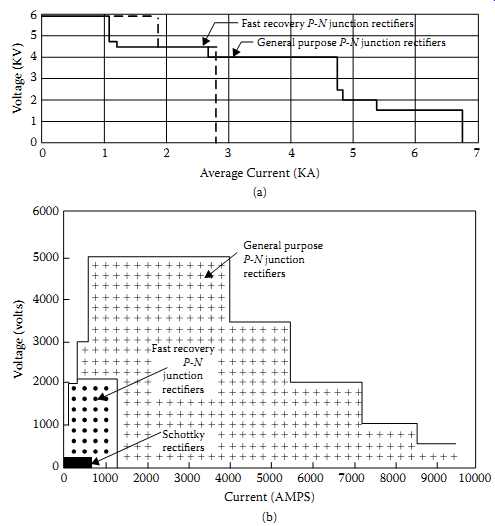
FIG. 1 Rectifier capabilities: (a) rectifier capabilities of a major supplier
of high-power semiconductors (reproduced by permission of GEC Plessey Semiconductors,
UK); (b) rectifier capabilities of a manufacturer catering to a wide range
of applications.

FIG. 2 Turn-on characteristics: (a) circuit; (b) waveforms.
During the turn-on interval tf, the current is not uniformly distributed so the current density can be high enough in some parts to cause hot spots and possible failure.
Accordingly, the rate of rise of current diD/dt should be limited until the conduction spreads uniformly and the current density decreases. Associated with the high-voltage
VFR at turn-on, there is high current, so there is extra power dissipation that is not evident from the steady-state model. The turn-on time varies from a few nanoseconds to about 1 ms, depending on the device type.

FIG. 3 Diode turn-off: (a) chopper circuit; (b) waveforms.
Reverse Recovery:
The turn-off phenomenon can be explained using FIG. 3. In FIG. 3(a) except for the diode, the circuit elements of this simple chopper are considered to be ideal.
Switching Sw at a regular frequency, the source of constant voltage, Vs, maintains a constant current I1 in the RL load, because it’s assumed that the load time constant (L/R) is long compared with the period of the switching.
While the switch Sw is closed, the load is being charged and the diode should be reverse biased. While the switch Sw is open, the diode D provides a freewheeling path for the load current Il. The inductance LS is included for practical reasons and may be the lumped source inductance and snubber inductance, which should have a freewheeling diode to suppress high voltages when the switch is opened.
Let us consider that steady conditions prevail. At the time t = 0- the switch Sw is open, the load current is i1 = Il, the diode current is iD = Il = IF, and the voltage drop VD across the diode is small (about 1 V).
The important concern is what happens after the switch is closed at t = 0. FIG. 3(b) depicts the waveforms of the diode current iD and voltage vD. At t = 0- there was the excess charge carrier distribution of conduction in the diode. This distribution cannot change instantaneously so at t = 0+ the diode still looks like a virtual short circuit, with:
vD = 1 V.
Kirchhoff's current law provides us with the relation:
iD Il −is and Kirchhoff's voltage law yields:
Accordingly, the diode current changes at the rate, ...
This means that it takes a time t1 = Ls(Il/Vs) seconds for the diode current to fall to zero. At the time t = t1 the current iD is zero, but up to this point the majority carriers have been crossing the junction to become minority carriers, so the P-N junction cannot assume a blocking condition until these carriers have been removed. At zero current, the diode is still a short circuit to the source voltage. Equations (1) to (3) still apply, and the current iD rises above Il at the same rate. The diode voltage VD changes little while the excess carriers remain. The diode reverse current rises over a time tr during which the excess charge carriers are swept out of the region.
At the end of the interval tr, the reverse current iD can have risen to a substantial value
IRR (peak reverse recovery current), but by this time, sufficient carriers have been swept out and recombined so that current cannot be supported. Therefore over a fall-time interval tf, the diode current iD reduces to almost zero very rapidly while the remaining excess carriers are swept out or recombined.
It’s during the interval tf that the potential barrier begins to increase both to block the reverse-bias voltage applied by the source voltage as iD reduces, and to suppress the diffusion of majority carriers because the excess carrier density at the junction is zero.
The reverse voltage creates the electric field that allows the depletion layer to acquire space charge and widen.
That is, the electric field causes electrons in the n region to be forced away from the junction toward the cathode and causes holes to be forced away from the junction toward the anode. The blocking voltage vD can rise above the voltage Vs transiently because of the additional voltage Ls(diD/dt) as iD falls to zero over the time tf.
The sum of the intervals tr + tf = trr is known as the reverse recovery time, and it varies generally (from 10 ns to over 1 microsecond) for different diodes. This time is also known as the storage time because it’s the time that is taken to sweep out the excess charge QRR from the silicon by the reverse current. QRR is a function of ID = Il, diD/dt, and the junction temperature.
It has an effect on the reverse recovery current IRR and the reverse recovery time trr, so it’s usually quoted in the data sheets. The fall time tf can be influenced by the design of the diode. It would seem reasonable to make it short to decrease the turn-off time, but the process is expensive. The bulk of the silicon can be doped with gold or platinum to reduce carrier lifetimes and hence to reduce tf. The advantage is an increased frequency of switching.
There are two disadvantages associated with this gain in performance. One is an increased on-state voltage drop and the other is an increased voltage recovery overshoot
VRR, which is caused by the increased Ls(dis/dt) as iD falls more quickly.
Waveforms associated with the reverse recovery behavior of diodes are slightly different in the two specific common cases, the freewheel mode and the rectifier mode.
Compared to the case of freewheel mode in FIG. 3, the rectifier case mode could have more overshooting in the negative direction with high-frequency ringing. This is discussed in [28].
Of the two effects, reverse recovery usually results in the greater power loss and can also generate significant EMI. However, these phenomena were considered to be no big deal at 50 or 60 Hz. With the advent of semiconductor power switches, power conversion began to move into the multi-kilohertz range, and faster rectifiers were needed.
The relatively long minority carrier lifetime in silicon (tens of microseconds) causes a lot more charge to be stored than is necessary for effective conductivity modulation.
In order to speed up reverse recovery, early "fast" rectifiers used various lifetime-killing techniques to reduce the stored minority charge in the lightly doped region. The reverse recovery times of these rectifiers were dramatically reduced, down to about 200 ns, although forward recovery and forward voltage were moderately increased as a side effect of the lifetime-killing process. As power conversion frequencies increased to 20 kHz and beyond, there eventually became a growing need for even faster rectifiers, which caused the "epitaxial" rectifier to be developed.
References [29-32] provide more information on the recovery process of high frequency rectifiers. Reference [33] provides details on approaches to the model recovery process.
Fast and Ultrafast Rectifiers:
The foregoing discussion reveals the importance of the switching parameters such as (a) forward recovery time (tfr), (b) forward recovery voltage (VFR), (c) reverse recovery time (trr), (d) reverse recovery charge (Qrr), and (e) reverse recovery current IRM, during the transition from forward to reverse and vice versa. With various process improvements, fast and ultrafast rectifiers have been achieved within the voltage and current limitations shown in FIG. 1.
The figure shows that technology is available for devices up to 2000 V ratings and over 1000 A current ratings, which are mutually exclusive. In these diodes although cold trr values are good, at high junction temperature, trr is three to four times higher, increasing switching losses and, in many cases, causing thermal runaway.
Several methods exist to control the switching characteristics of diodes, and each leads to a different interdependency of forward voltage drop VF, blocking voltage VRRM, and trr values. It’s these interdependencies (or compromises) that differentiate the ultrafast diodes available on the market today. The important parameters for the turn-on and turn-off behavior of a diode are VFR, VF, tfr, IRM, and trr, and the values vary depending on the manufacturing processes.
Several manufacturers, such as IXYS Semiconductors and International Rectifier, manufacture a series of ultrafast diodes, termed fast-recovery epitaxial diodes (FREDs), which gained wide acceptance during the 1990s. For an excellent description of these components, see [21].
Schottky Rectifiers:
Schottky rectifiers occupy a small corner of the total spectrum of available rectifier voltage and current ratings illustrated in FIG. 1(b). They are, nonetheless, the rectifier of choice for low-voltage switching power supply applications, with output voltages up to a few tens of volts, particularly at high switching frequency. For this reason, Schottkys account for a major segment of today's total rectifier usage. The Schottkys' unique electrical characteristics set them apart from conventional P-N junction rectifiers, in the following important respects:
• Lower forward voltage drop
• Lower blocking voltage
• Higher leakage current
• Virtual absence of reverse recovery charge
The two fundamental characteristics of the Schottky that make it a winner over the P-N junction rectifier in low-voltage switching power supplies are its lower forward voltage drop and virtual absence of minority carrier reverse recovery.
The absence of minority carrier reverse recovery means virtual absence of switching losses within the Schottky itself. Perhaps more significantly, the problem of switching voltage transients and attendant oscillations is less severe for Schottkys than for P-N junction rectifiers. Snubbers are therefore smaller and less dissipative.
The lower forward voltage drop of the Schottky means lower rectification losses, better efficiency, and smaller heat sinks. Forward voltage drop is a function of the Schottky's reverse voltage rating. The maximum voltage rating of today's Schottky rectifiers is about 150 V. At this voltage, the Schottky's forward voltage drop is lower than that of a fast recovery epitaxial P-N junction rectifier by 150 to 200 mV.
At lower voltage ratings, the lower forward voltage drop of the Schottky becomes progressively more pronounced, and more of an advantage. A 45 V Schottky , for example, has a forward voltage drop of 0.4 to 0.6 V, versus 0.85 to 1.0 V for a fast-recovery epitaxial P-N junction rectifier. A 15 V Schottky has a mere 0.3 to 0.4 V forward voltage drop.
A conventional fast-recovery epitaxial P-N junction rectifier, with a forward voltage drop of 0.9 V, would dissipate about 18% of the output power of a 5 V supply. A Schottky, by contrast, reduces rectification losses to the range of 8% to 12%. These are the simple reasons why Schottkys are virtually always preferred in low-voltage, high-frequency switching power supplies. For any given current density, the Schottky's forward voltage drop increases as its reverse repetitive maximum voltage (VRRM) increases. The basic hallmarks of any process are its maximum-rated junction temperature-the Tjmax class and the "prime" rated voltage, the Vrrm class. These two basic hallmarks are set by the process; they in turn determine the forward voltage drop and reverse leakage current characteristics. FIG. 4 indicates this condition for Tjmax of 150°C.
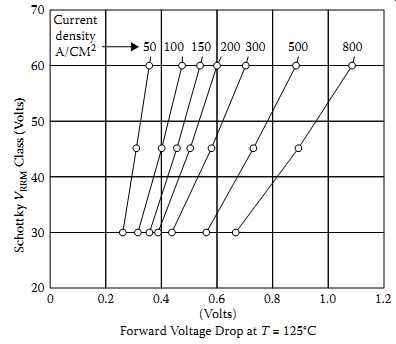
FIG. 4 Relationships between Schottky VRRM class and forward voltage drop
, for 150°C . Tjmax class devices. (International Rectifier, USA. .)
Leakage Current and Junction Capacitance of Schottky Diodes:
FIG. 5 shows the dependence of leakage current on the operating voltage and junction temperature within any given process. Reverse leakage current increases with applied reverse voltage and with junction temperature. FIG. 6 shows typical relationship between operating temperature and leakage current, at rated VRRM , for the 150°C/45 V and 175°C/45 V Schottky processes.
An important circuit characteristic of the Schottky is its junction capacitance. This is a function of the area and thickness of the Schottky die, and of the applied voltage. The higher the VRRM class, the greater the die thickness and the lower the junction capacitance.
This is illustrated in FIG. 7. Junction capacitance is essentially independent of the Schottky's Tjmax class and of operating temperature.
Around early 2000, manufacturers such as International Rectifier have introduced better Schottky diodes, based on trench technology, which have lower forward voltage drop and lower reverse leakage current than the common planar Schottky diodes. The new optimized trench Schottky diodes (an example is 80CPT015) offer 15% reduction in forward drop and a fourfold improvement in reverse leakage current [34]. Another such advancement reported was the trench MOS barrier Schottky diodes, introduced by Vishay Semiconductors, which offers low forward voltage together with higher blocking voltages such as 120 V to 150 V , for example parts such as Vishay VTS40100CT with 40 A, 100 V ratings [35].
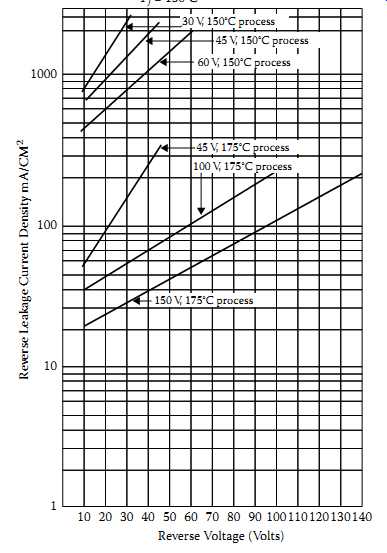
FIG. 5 Relationships between reverse leakage current density and applied
reverse voltage.
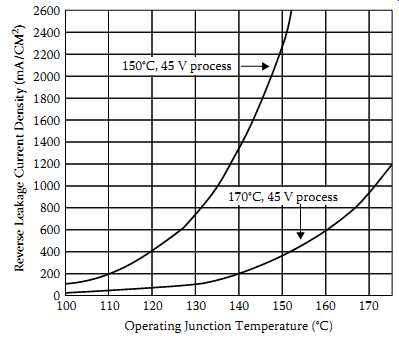
FIG. 6 Typical relationships between reverse leakage current density and
operating junction temperature. (Reproduced from International Rectifier,
USA. With permission.)
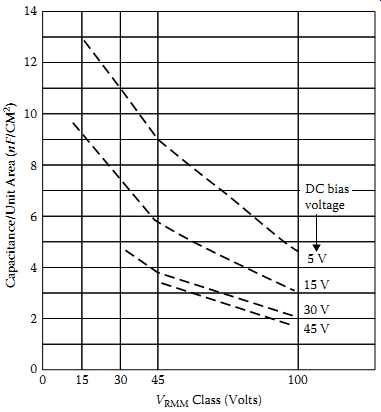
FIG. 7 Typical Schottky self-capacitance versus VRRM class, measured at
various bias voltages.
GaAs Power Diodes:
Efficient power conversion circuitry requires rectifiers that exhibit low forward voltage drop, low reverse recovery current, and fast recovery time. Silicon has been the material of choice for fast, efficient rectification in switched power applications.
However, technology is nearing the theoretical limit for optimizing reverse recovery in silicon devices.
To increase speed, materials with faster carrier mobility are needed. Gallium arsenide (GaAs) has a carrier mobility that is five times that of silicon [24]. Since Schottky technology for silicon devices is difficult to produce at voltages above 200 V, development has focused on GaAs devices with ratings of 180 V and higher. The advantages realized by using GaAs rectifiers include fast switching and reduced reverse recovery related parameters. An additional benefit is that the variation of parameters with temperature is much less than silicon rectifiers.
For example, Motorola's 180 V and 250 V GaAs rectifiers are being used in power converters that produce 24, 36, and 48 V DC outputs. Converters producing 48 V DC, especially popular in telecommunications and mainframe computer applications, could gain the advantage of GaAs parts compared to similar silicon-based parts at switching frequencies around 1 MHz [25].
The 180 V devices offered by Motorola can increase power density in 48 V DC applications up to 90 W/in^3 [21]. These devices allow designers to switch converters at 1 MHz without generating large amounts of EMI.
Figures 8(a) and 8(b) indicate typical forward voltage and typical reverse current for 20 A, 180 V GaAs parts from Motorola.
For further details, the reader is directed to [1,24,25].
Silicon Carbide (SiC) Schottky Diodes:
A new option for high-speed diode requirements is the SiC Schottky diodes, which started appearing on the market around 2002. These devices have a much bigger blocking voltage capability up to about 3.5 kV, a bandgap 3 times higher than silicon, a breakdown field 10 times higher than silicon, and a thermal conductivity comparable with copper. FIG. 9(a) depicts blocking voltage capabilities of silicon, GaAs, and SiC devices. FIG. 9(b) compares the reverse recovery characteristics of 600 V capability ultrafast diodes and an SiC device. More details on SiC power semiconductors can be found in [36-40].

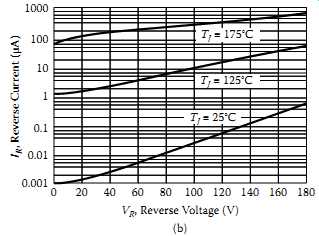
FIG. 8 Typical characteristics of GaAs power diodes with 20 A, 180 V ratings:
(a) forward voltage; (b) reverse current.

FIG. 9 Comparison SiC diodes with other devices: (a) blocking voltage capability;
(b) reverse recovery characteristics. (Power Electronics Technology, January
2002, 15-21.)
2.2 Thyristors
The thyristor is a four-layer, three-terminal device as depicted in FIG. 10. The complex interactions between three internal P-N junctions are then responsible for the device characteristics. However, the operation of the thyristor and the effect of the gate in controlling turn-on can be illustrated and followed by reference to the two-transistor model of FIG. 11. Here, the p1-n1-p2 layers are seen to make up a PNP transistor, and the n2-p2-n1 layers create an NPN transistor with the collector of each transistor connected to the base of the other.
With a reverse voltage, cathode positive with respect to the anode, applied to the thyristor, the p1-n1 and p2-n2 junctions are reverse biased and the resulting characteristic is similar to that of the diode with a small reverse leakage current flowing up to the point of reverse breakdown as shown by FIG. 12(a). With a forward voltage applied and no gate current supported, the thyristor is in the forward-blocking mode. The emitters of the two transistors are now forward biased and no conduction occurs. As the applied voltage is increased, the leakage current through the transistors increases to the point at which the positive feedback resulting from the base/collector connections drives both transistors into saturation, turning them, and hence the thyristor, on. The thyristor is now conducting, and the forward voltage drop across it falls to a value of the order of 1 to 2 V. This condition is also shown in the thyristor static characteristic of FIG. 12(a).
If a current is injected into the gate at a voltage below the breakover voltage, this will cause the NPN transistor to turn on. The positive feedback loop will then initiate the turn-on of the PNP transistor. Once both transistors are on, the gate current can be removed because the action of the positive feedback loop will be to hold both transistors, and hence the thyristor, in the on state.
The effect of the gate current is therefore to reduce the effective voltage at which forward breakover occurs, as illustrated by the FIG. 12(b). After the thyristor has been turned on, it will continue to conduct as long as the forward current remains above the holding current level, irrespective of gate current or circuit conditions.

FIG. 10 The thyristor: (a) construction; (b) circuit symbol.

FIG. 11 The two-transistor model of a thyristor: (a) structure; (b) the
PNP and NPN transistor combination.
===
(a) Reverse breakdown voltage Holding current Holding current Reverse leakage current
Forward volt-drop (conducting) Forward breakover voltage Latching current Latching current Increasing gate current Latching current >Holding current (b)
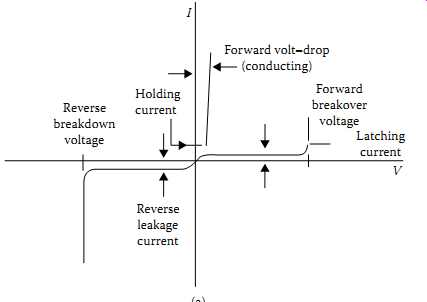
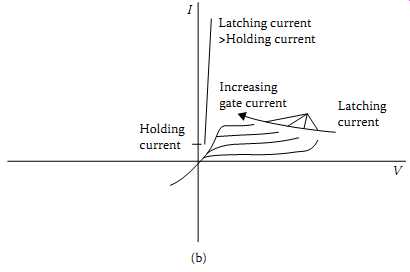
FIG. 12 Thyristor characteristics: (a) thyristor characteristics with zero
gate current; (b) switching characteristics.
===
Ratings and Different Types of Devices:
The operation of all power semiconductors is limited by a series of ratings that define the operating boundaries of the device. These ratings include limits on the peak, average, and RMS currents, the peak forward and reverse voltages for the devices, maximum rates of change of device current and voltage, device junction temperature, and, in the case of the thyristor, the gate current limits.
The current ratings of a power semiconductor are related to the energy dissipation in the device and hence the device junction temperature. The maximum value of on-state current (Iav(max)) is the maximum continuous current the device can sustain under defined conditions of voltage and current waveform without exceeding the permitted temperature rise in the device. The RMS current rating (IRMS) is similarly related to the permitted temperature rise when operating into a regular-duty cycle load.
In the case of transient loads, as the internal losses and hence the temperature rise in a power semiconductor are related to the square of the device forward current, the relationship between the current and the permitted temperature rise can be defined in terms of an i2dt rating for the device. On turn-on, current is initially concentrated into a very small area of the device cross section and the device is therefore subject to a di/dt rating, which sets a limit to the permitted rate of rise of forward current.
The voltage ratings of a power semiconductor device are primarily related to the maximum forward and reverse voltages that the device can sustain. Typically, values will be given for the maximum continuous reverse voltage (VRC(max)), the maximum repetitive reverse voltage (VRR(max)), and the maximum transient reverse voltage (VRT(max)). Similar values exist for the forward-voltage ratings.
The presence of a fast transient of forward voltage can cause a thyristor to turn on, and a dv/dt rating is therefore specified for the device. The magnitude of the imposed: dv/dt can be controlled by the use of a snubber circuit connected in parallel with the thyristor. Data sheets for thyristors always quote a figure for the maximum surge current: ITSM that the device can survive.
This figure assumes a half sine pulse with a width of either 8.3 or 10 ms, which are the conditions applicable for 60 or 50 Hz mains, respectively. This limit is not absolute;
narrow pulses with much higher peaks can be handled without damage, but little information is available to enable the designer to determine a current rating for short pulses.
See [2] for guidelines in this area.
Ever since its introduction, circuit design engineers have been subjecting the thyristor to increasing levels of operating stress and demanding that these devices perform satisfactorily there. The different stress demands that the thyristor must be able to meet are:
Higher blocking voltages More current-carrying capability Higher di/dt's Higher dv/dt's Shorter turn-off times Lower gate drive Higher operating frequencies.
There are many different thyristors available today that can meet one or more of these requirements, but, as always, an improvement in one characteristic is usually gained only at the expense of another. As a result, different thyristors have been optimized for different applications. Modern thyristors can be classified into several general types, namely:
Phase control thyristors Inverter thyristors Asymmetrical thyristors Reverse-conducting thyristors (RCTs) Light-triggered thyristors.
The voltage and current capabilities of phase control thyristors and inverter thyristors from a power device manufacturer are summarized in FIG. 13.
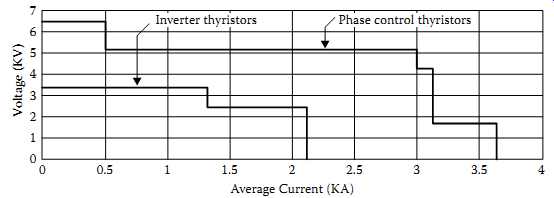
FIG. 13 Thyristor rating capabilities
Phase Control Thyristors:
Phase control or converter thyristors generally operate at line frequency. They are turned off by natural commutation and don’t have special fast-switching characteristics.
Current ratings of phase control thyristors cover the range from a few amperes to about 3500 A, and voltage ratings from 50 to over 6500 V. To simplify the gate drive requirement and increase sensitivity, the use of an amplifying gate, which was originally developed for fast-switching "inverter" thyristors, is widely adopted in phase control SCR.
Inverter Thyristors:
The most common feature of an inverter thyristor that distinguishes it from a standard phase control type is that it has fast turn-off time, generally in the range of 5 to 50 μs, depending upon voltage rating. Maximum average current ratings of over 2000 and 1300 A have been achieved with 2000 V- and 3000 V-rated inverter thyristors, respectively.
Inverter thyristors are generally used in circuits that operate from DC supplies, where current in the thyristor is turned off either through the use of auxiliary comutating circuitry, by circuit resonance, or by "load" commutation. Whatever the circuit turn-off mechanism, fast turn-off is important because it minimizes sizes and weight of comutating and/or reactive circuit components.
Asymmetrical Thyristors:
One of the main salient characteristics of asymmetrical thyristors (ASCRs) is that they don’t block significant reverse voltage. They are typically designed to have a reverse blocking capability in the range of 400 to 2000 V.
The ASCR finds applications in many voltage-fed inverter circuits that require antiparallel feedback rectifiers that keep the reverse voltage to less than 20 V. The fact that ASCR needs to block voltage only in the forward direction provides an extra degree of freedom in optimizing turn-off time, turn-on time, and forward-voltage drop.
Reverse-Conducting Thyristors:
The reverse-conducting thyristor (RCT) represents the monolithic integration of an asymmetrical thyristor with an antiparallel rectifier. Beyond obvious advantages of the parts count reduction, the RCT eliminates the inductively induced voltage within the thyristor-diode loop (virtually unavoidable to some extent with separate discrete components).
Also, it essentially limits the reverse voltage seen by the thyristor to only the conduction voltage of the diode.
Light-Triggered Thyristors:
Many developments have taken place in the area of light-triggered thyristors. Direct irradiation of silicon with light-created electron-hole pairs, which, under the influence of an electric field, produce a current that triggers the thyristors.
The turn-on of a thyristor by optical means is an especially attractive approach for devices that are to be used in extremely high-voltage circuits. A typical application area is in switches for DC transmission lines operating in the hundreds of kilovolts range, which use series connections of many devices, each of which must be triggered on command. Optical firing in this application is ideal for providing the electrical isolation between trigger circuits and the thyristor, which floats at a potential as high as hundreds of kilovolts above ground.
The main requirement for an optically triggered thyristor is high sensitivity while maintaining high dv/dt and di/dt capabilities. Because of the small and limited quantity of photo energy available for triggering the thyristor from practical light sources, very high gate sensitivity of the order of 100 times that of the electrically triggered device is needed.
JEDEC Titles and Popular Names:
Table 1 compares the Joint Electronic Device Engineering Council (JEDEC) titles for commercially available thyristors types with popular names. JEDEC is an industry standardization activity cosponsored by the Electronic Industries Association (EIA) and the National Manufacturers Association (NEMA). Silicon-controlled rectifiers (SCRs) are the most widely used power control elements. Triacs are quite popular in lower-current (<40 A) AC power applications.
===
Table 1 Thyristor Types and Popular Names
JEDEC Titles Popular Names, Types
Reverse-blocking diode thyristor
Four-layer diode, silicon unilateral switch (SUS)
Reverse-blocking triode
Silicon-controlled rectifier (SCR)
Reverse-conducting diode thyristor a Reverse-conducting four-layer diode
Reverse-conducting triode thyristor
Reverse-conducting SCR
Bidirectional triode thyristor
Triac
Turn-off thyristor
Gate turn-off switch (GTO)
===
Gate Turn-Off Thyristors
A gate turn-off thyristor (GTO) is a thyristor-like latching device that can be turned off by application of a negative pulse of current to its gate. This gate turn-off capability is advantageous because it provides increased flexibility in circuit application. It now becomes possible to control power in DC circuits without the use of elaborate commutation circuitry.
Prime design objectives for GTO devices are to achieve fast turn-off time and high current turn-off capability and to enhance the safe-operating area during turnoff.
Significant progress has been made in both areas during the last few years, largely due to a better understanding of the turn-off mechanisms. The GTO's turn-off occurs by removal of excess holes in the cathode-base region by reversing the current through the gate terminal.

FIG. 14 GTO symbol, equivalent circuit, and basic drive circuit: (a) symbol
of GTO; (b) two-transistor equivalent of GTO; (c) basic drive circuit.
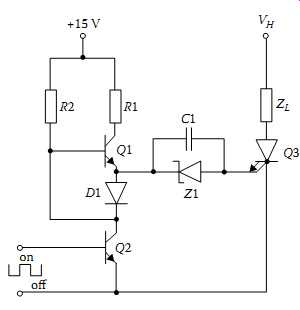
FIG. 15 Practical realization of a GTO gate drive circuit.
The GTO has gained popularity in switching circuits, especially in equipment that operates directly from European mains. The GTO offers the following advantages over a bipolar transistor: high blocking voltage capabilities, in excess of 1500 V, and also high overcurrent capabilities. It also exhibits low gate currents, fast and efficient turn-off, as well as outstanding static and dynamic dv/dt capabilities.
FIG. 14(a) depicts the symbol of GTO, and FIG. 14(b) shows its two-transistor equivalent circuit. FIG. 14(c) shows a basic drive circuit. The GTO is turned on by a positive gate current, and it’s turned off by applying a negative gate cathode voltage.
A practical implementation of a GTO gate drive circuit is shown in FIG. 15. In this circuit when transistor Q2 is off, emitter follower transistor Q1 acts as a current source pumping current into the gate of the GTO through a 12 V zener Z1 and polarized capacitor C1. When the control voltage at the base of Q2 goes positive, transistor Q2 turns on, while transistor Q1 turns off since its base now is one diode drop more negative than its emitter. At this stage the positive side of capacitor C1 is essentially grounded, and C1 will act as a voltage source of approximately 10 V, turning the GTO off. Isolated gate drive circuits may also be easily implemented to drive the GTO.
With improved cathode emitter geometries and better optimized vertical structures, today's GTOs have made significant progress in turn-off performance (the prime weakness of earlier GTOs). FIG. 16 shows the available GTO ratings and, as can be seen, they cover quite a wide spectrum. However, the main applications lie in the higher voltage end (>1200 V) where bipolar transistors and power MOSFETs are unable to compete effectively. In the present-day market there are GTOs with current ratings over 3000 A and voltage ratings over 4500 V. For further details on GTOs, see [3-5].
Bipolar Power Transistors
During the last two decades, attention has been focused on high-power transistors as switching devices in inverters, SMPSs, and similar switching applications. New devices with faster switching speeds and lower switching losses are being developed that offer performance beyond that of thyristors. With their faster speed, they can be used in an inverter circuit operating at frequencies over 200 KHz. In addition, these devices can be readily turned off with a low-cost reverse base drive without the costly commutation circuits required by thyristors.
Bipolar Transistor as a Switch
The bipolar transistor is essentially a current-driven device. That is, by injecting a current into the base terminal a flow of current is produced in the collector. There are essentially two modes of operation in a bipolar transistor: the linear and saturating modes.
The linear mode is used when amplification is needed, while the saturating mode is used to switch the transistor either on or off.
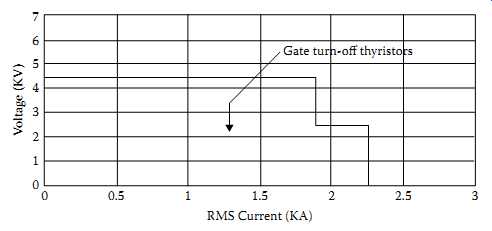
FIG. 16 Ratings covered by available GTOs.
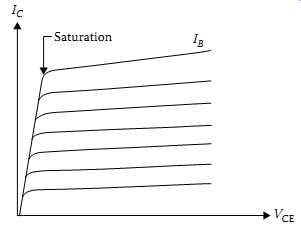
FIG. 17 Typical output characteristics of BJT.
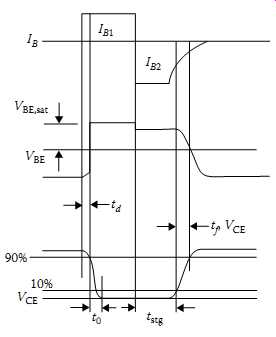
FIG. 18 Bipolar transistor switching waveforms.
FIG. 17 shows the V-I characteristic of a typical bipolar transistor. Close examination of these curves shows that the saturation region of the V-I curve is of interest when the transistor is used in a switching mode. At that region a certain base current can switch the transistor on, allowing a large amount of collector current to flow, while the collector-to-emitter voltage remains relatively small.
In actual switching applications a base drive current is needed to turn the transistor on, while a base current of reverse polarity is needed to switch the transistor back off.
In practical switching operations certain delays and storage times are associated with transistors. In the following section are some parameter definitions for a discrete bipolar transistor driven by a step function into a resistive load.
FIG. 18 illustrates the base-to-emitter and collector-to-emitter waveforms of a bipolar NPN transistor driven into a resistive load by a base current pulse IB. The following are the definitions associated with these waveforms:
Delay Time, td: Delay time is defined as the interval of time from the application of the base drive current IB1 to the point at which the collector-emitter voltage VCE has dropped to 90% of its initial off value.
Rise Time, tr: Rise time is defined as the interval of time it takes the collector-emitter voltage VCE to drop to 10% from its 90% off value.
Storage Time, tstg: Storage time is the interval of time from the moment reverse base drive IB2 is applied to the point where the collector-emitter voltage VCE has reached 10% of its final off value.
Fall Time, tf,VCE: Fall time is the time interval required for the collector-emitter voltage to increase from 10% to 90% of its off value.
Inductive Load Switching
In the previous section, the definitions for the switching times of the bipolar transistor were made in terms of collector-emitter voltage. Since the load was defined to be a resistive one, the same definitions hold true for the collector current. However, when the transistor drives an inductive load, the collector voltage and current waveforms will differ. Since current through an inductor does not flow instantaneously with applied voltage, during turn-off one expects to see the collector-emitter voltage of a transistor rise to the supply voltage before the current begins to fall. Thus two fall time components may be defined, one for the collector-emitter voltage tf, VCE and the other for the collector current tf,Ic. FIG. 19 shows the actual waveforms.
Observing the waveforms in FIG. 19 we can define the collector-to-emitter fall time tf, VCE in the same manner as in the resistive case, while the collector fall time tf, Ic
may be defined as the interval in which collector current drops from 90% to 10% of its initial value. Normally, the load inductance L behaves as a current source, and therefore it charges the base-collector transition capacitance faster than the resistive load. Thus for the same base and collector currents, the collector-emitter voltage fall time tf, VCE is shorter for the inductive circuit.
Safe Operating Area and V-I Characteristics
The output characteristics (IC versus VCE) of a typical NPN power transistor are shown in FIG. 20(a). The various curves are distinguished from each other by the value of the base current.
Several features of the characteristics should be noted. First, there is a maximum collector-emitter voltage that can be sustained across the transistor when it’s carrying substantial collector current. The voltage is usually labeled BVSUS. In the limit of zero base current, the maximum voltage between collector and emitter that can be sustained increases somewhat to a value labeled BVCEO, the collector-emitter breakdown voltage when the base is open circuited. This latter voltage is often used as the measure of the transistor's voltage standoff capability because usually the only time the transistor will see large voltages is when the base current is zero and the BJT is in cutoff.
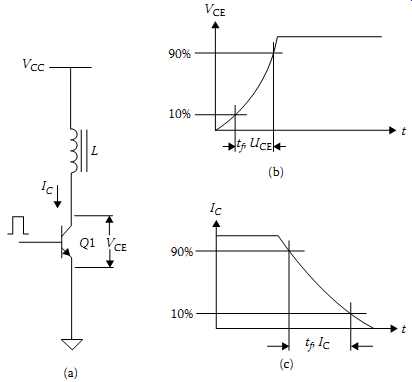
FIG. 19 A bipolar switching transistor driving an inductive load with associated
fall-time waveforms: (a) circuit; (b) voltage waveform; (c) current waveform.


FIG. 20 Current-voltage characteristics of an NPN power transistor showing
breakdown phenomenon: (a) indication of quasi saturation; (b) relative primary
and secondary breakdown conditions for different bias levels.
The voltage BVCBO is the collector-base breakdown voltage when the emitter is open circuited. The fact that this voltage is larger than BVCEO is used to advantage in so-called open-emitter transistor turn-off circuits.
The region labeled primary breakdown is due to conventional avalanche breakdown of the collector-base junction and the attendant large flow of current. This region of the characteristics is to be avoided because of the large power dissipation that clearly accompanies such breakdown.
The region labeled second breakdown must also be avoided because large power dissipation also accompanies it, particularly at localized sites within the semiconductor. The origin of second breakdown is different from that of avalanche breakdown and will be considered in detail later in this section. BJT failure is often associated with second breakdown.
The major observable difference between the I-V characteristics of a power transistor and those of a logic-level transistor is the region labeled quasi-saturation on the power transistor characteristics of FIG. 20(a). Quasi-saturation is a consequence of the lightly doped collector drift region found in the power transistor.
Logic-level transistors don’t have this drift region and so don’t exhibit quasi-saturation.
Otherwise all of the major features of the power transistor characteristic are also found on those of logic-level devices.
FIG. 20(b) indicates the relative magnitudes of NPN transistor collector breakdown characteristics, showing primary and secondary breakdown with different base bias conditions.
With low-gain devices Va is close to Vb in value, but with high-gain devices Vb may be two to three times that of Va. Notice that negative resistance characteristics occur after breakdown, as is the case with all the circuit-dependent breakdown characteristics.
Reference [22] provides a detailed explanation on the behavior.
Forward-Bias Secondary Breakdown:
In the switching process BJTs are subjected to great stress, during both turn-on and turn-off. It’s imperative that the engineer clearly understand how the power bipolar transistor behaves during forward- and reverse-bias periods in order to design reliable and trouble-free circuits.
The first problem is to avoid secondary breakdown of the switching transistor at turn-on, when the transistor is forward biased. Normally the manufacturer's specifications will provide a safe-operating area (SOA) curve, such as the typical one shown in FIG. 21.
In this figure collector current is plotted against collector-emitter voltage. The curve locus represents the maximum limits at which the transistor may be operated. Load lines that fall within the pulsed forward-bias SOA curve during turn-on are considered safe, provided that the device thermal limitations and the SOA turn-on time are not exceeded.
The phenomenon of forward-biased secondary breakdown is caused by hot spots that are developed at random points over the working area of a power transistor, caused by unequal current conduction under high-voltage stress. Since the temperature coefficient of the base-to-emitter junction is negative, hot spots increase local current flow. More current means more power generation, which in turn raises the temperature of the hot spot even more.
Since the temperature coefficient of the collector-to-emitter breakdown voltage is also negative, the same rules apply. Thus the voltage stress is not removed, ending the current flow, the collector-emitter junction breaks down, and the transistor fails because of thermal runaway.
===
Pulsed-SOA DC-SOA Secondary breakdown limit
VCE Limit (VCEO)
VCE
IC Limit
Ptot Limit
FIG. 21 DC and pulse SOA for BJT.
===
Reverse-Bias Secondary Breakdown:
It was mentioned in previous paragraphs that when a power transistor is used in switching applications, the storage time and switching losses are the two most important parameters with which the designer has to deal extensively.
On the other hand the switching losses must also be controlled since they affect the overall efficiency of the system. FIG. 22 shows turn-off characteristics of a high-voltage power transistor in resistive and inductive loads. Inspecting the curves we can see that the inductive load generates a much higher peak energy at turn-off than its resistive counterpart. It’s then possible, under these conditions, to have a secondary breakdown failure if the reverse-bias safe-operating area (RBSOA) is exceeded.
The RBSOA curve ( FIG. 23) shows that for voltages below VCEO the safe area is independent of reverse-bias voltage VEB and is limited only by the device collector current IC. Above VCEO the collector current must be derated depending upon the applied reverse-bias voltage.
It’s then apparent that the reverse-bias voltage VEB is of great importance and its effect on RBSOA very interesting. It’s also important to remember that avalanching the base-emitter junction at turn-off must be avoided, since turn-off switching times may be decreased under such conditions. In any case, avalanching the base-emitter junction may not be considered relevant, since normally designers protect the switching transistors with either clamp diodes or snubber networks to avoid such encounters.
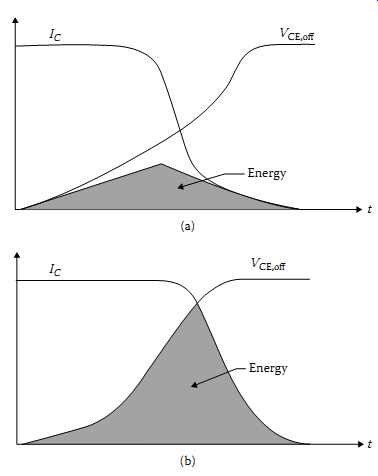
FIG. 22 Turn-off characteristics of a high-voltage BJT: (a) resistive load;
(b) inductive load.
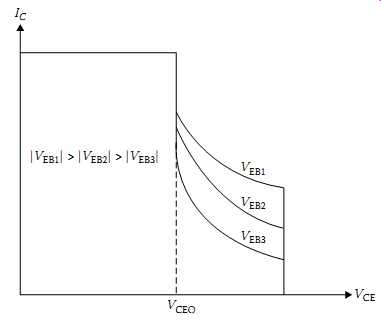
FIG. 23 RBSOA plot for a high-voltage BJT as a function of reverse-bias
voltage VEB.

FIG. 24 Darlington configurations: (a) Darlington; (b) triple Darlington.
Darlington Transistors
The on-state voltage VCE(sat) of the power transistors is usually in the 1-2 V range, so that the conduction power loss in the BJT is quite small. BJTs are current-controlled devices, and base current must be supplied continuously to keep them in the on state. The DC current gain hFE is usually only 5-10 in high-power transistors and so these devices are sometimes connected in a Darlington or triple Darlington configuration as is shown in FIG. 24 to achieve a larger current gain. However, some disadvantages accrue in this configuration including slightly higher overall VCE(sat) values and slower switching speeds. The current gain of the pair hFE is:
hFE hFE1 hFE2 hFE1 hFE2
Darlington configurations using discrete BJTs or several transistors on a single chip (a monolithic Darlington [MD]) have significant storage time during the turn-off transition. Typical switching times are in the range of a few hundred nanoseconds to a few microseconds.
BJTs including MDs are available in voltage ratings up to 1400 V and current ratings of a few hundred amperes. In spite of a negative temperature coefficient of on-state resistance, modern BJTs fabricated with good quality control can be paralleled provided that care is taken in the circuit layout and that some extra current margin is provided.
FIG. 25 shows a practical monolithic Darlington pair with diode D1 added to speed up the turn-off time of Q1 and D2 added for half- and full-bridge circuit applications.
Resistors R1 and R2 are low-value resistors and provide a leakage path for Q1 and Q7.
